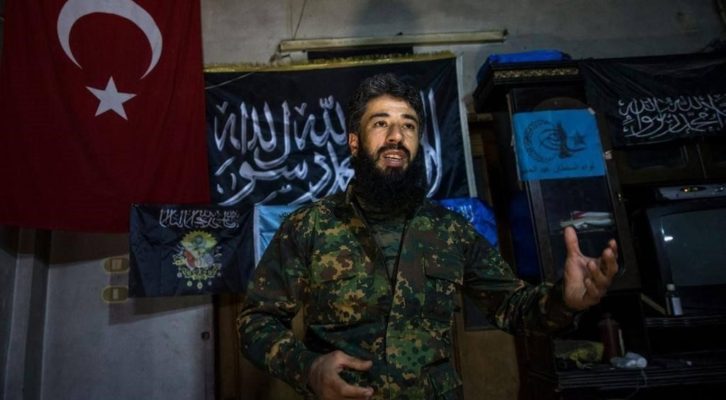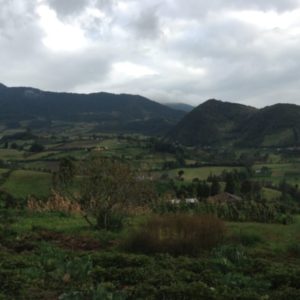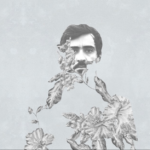On July 10, 1918, the Ottoman Minister of War, Enver Pasha, ordered the formation of the “Islamic Army of the Caucasus” in order to repel the Armenian forces in South Caucasus, unite all the Turkic nations in the region under the banner of Islam, and capture the oil fields of Baku. Enver’s initiative was quite successful and played a major role in the Caucasus campaign during World War I; however, it had clashed with the German and Russian/Bolshevik interests.
There were interesting developments in the Caucasus during that time. Bolsheviks who signed the Treaty of Brest-Litovsk agreed to recognize Georgia’s independence under German protectorate and allowed Germany to have 25-percent of Baku’s oil. The main aim of the Bolsheviks was to buy time and prevent the Ottomans from capturing Baku by encouraging the historical enemy, the Germans, to capture the railroad and pipeline running from Baku to Batumi. Under German pressure, the Ottomans gave up the idea of capturing the strategic railroad and concentrated their efforts on Baku. On September 15, 1918, the “Army of Islam” took Baku and committed massacres against the Armenians and communists. However, with the end of the Great War and surrender of the Ottoman Empire, Enver’s dream came to an end and his forces withdrew from the region.
Almost a century later the idea of reviving an “Islamic army” under Turkish command has still played an important role in the mindset of contemporary AKP leaders. In 1997, Istanbul’s Islamist mayor Recep Tayyip Erdogan cited Ziya Gokalp’s poem “The mosques are our barracks, the domes our helmets, the minarets our bayonets and the faithful our soldiers…” which resulted in him being jailed. This poem can summarize the basic ideological narrative of contemporary Turkey. Turkey’s foreign policy under Erdogan started to follow a pan-Islamist/ neo-Ottoman and pan-Turkic path, often clashing with its neighbors in the Mediterranean and the Middle East. In order to fulfill his dream, Erdogan needed a loyal army composed of mercenaries. Mercenaries are less costly, and they can be skillful and ready to fight for money. However, Erdogan’s “Army of Islam” also has an ideological backbone since it contains skilled Turkic fighters too.
So who are these mercenaries and the Turkoman fighters eager to die for Erdogan’s expansionist policies?
Syrian Turkomans are of Turkish origin and share a significant part of their culture with Turkey. With the start of the Syrian crisis in 2011, Turkish nationalism began to be a strong force in ideological movements within the community. Turkomans in Syria openly show support for more conservative Turkish parties like MHP and the ruling party, AKP. Neo-Ottomanism and Pan-Turkism is also a common theme among Turkoman brigades in Syria, with several brigades making use of Ottoman flags, Pan-Turkic names and symbols. In order to organize the community, in December 2012 the Syrian Turkmen Assembly, a coalition of Syrian Turkoman political parties and groups, was formed with Turkish backing and support. It was mainly composed of the Syria Turkmen Bloc and the Syrian Democratic Turkmen Movement. The Turkish occupation in Northern Syria seeks to legitimize the military presence of Turkoman fighters, and Ankara considers them the most loyal to its policies and to revive its Ottoman dreams of expansion. Soon the assembly had its military wing called the Syrian Turkmen Brigades headquartered in Istanbul and led by Ahmet Arnavut (also known as Abu Fadil).
In December 2017, Turkey regrouped all the Syrian Arab and Turkoman military forces and founded the “Syrian National Army” (SNA). The SNA is a Turkish-backed armed opposition group composed of 80,000 to 100,000 fighters. The bulk of this force consists of the Sultan Murad and Hamza Turkoman divisions/brigades. SNA is concentrated in Turkish-occupied areas in Afrin, Idlib, and Aleppo. The official aim of the structure is to assist the Republic of Turkey in creating a “safe zone” in Northern Syria, and to establish a “National Army”. While nominally the SNA has a unitary structure answerable to the “Syrian Interim Government,” a Turkish-backed political body, the group answers directly to Turkey. Several cases of human rights violations have been reported by the Syrian Observatory for Human Rights (SOHR) where SNA fighters have published pictures of themselves torturing Kurdish war prisoners. The SNA operates as a proxy army for Turkey, engaging in conflicts outside Syria from Libya to the south Caucasus.
Many active Turkoman militias and divisions are acting under the umbrella of “Syrian National Army” such as Sultan Murad Division, Mehmed the Conqueror Brigade, Alparslan Special Forces, Syrian Turkmen Front, Sultan Selim Brigade, Anwar al-Haq Battalion, Ashab al-Yamin Brigade, Second Coastal Division, Turkmen Mountain Brigade, Muntasir Billah Brigade, Suleyman-Shah Brigade, Sultan Malik-Shah Brigade, Samarkand Brigade (formerly part of the Hamza Division), Sultan Abdul Hamid Han Brigade. However, I will shed light mainly on Sultan Murad, Sultan Abdul Hamid Han, Suleiman Shah and Hamza divisions due to their effectiveness and popularity.
The Syrian Turkmen Brigades, also called the United Turkmen Army (Turkish: Birleşik Türkmen Ordusu), represent a wide spectrum of ideologies from Islamism to secular right-wing Turkish nationalism, often in affiliation with the Turkish terrorist “Grey Wolves” organization. They are composed of dozens of divisions and brigades and trained by the SADAT International Defense Consultancy company (known as Erdogan’s Black Water-type private militias). They have recruited not only local Arabs and Turkomans but also Turks and Turkic people from North Caucasus, Central Asia and beyond.
Who are those divisions and brigades?
The Sultan Murad Division is one of the most famous Turkoman forces formed in early 2013 and mainly operates in the Aleppo and Latakia Governorate, claiming to have around 1,300 fighters as of 2016. This group includes several brigades such as the Mehmed the Conqueror Brigade, Syrian Turkmen Front, Mehmed the Conqueror Brigade, Martyr Zaki Turkmani Brigade, Ashbal Akida Brigade, Ahli Sunnah and Community Brigade, First Regiment, and the Turkmen Martyrs Brigade. On November 1, 2016, a group named the “Forces of Alp Arslan” was formed in northern Aleppo and joined the Sultan Murad Division; its logo was a modified version of the Grey Wolves. The division also has several Turkish-born fighters such as Zefer Kerkec, who has been seen with several important commanders and Turkish fighters. Also, it has been reported that several fighters from Central Asia and China’s Xinjiang Province have joined this division.
There is also the Hamza Division, formed in 2013, which cooperates with the Turkish Armed Forces. The division followed behind the Turkish infantry and tank divisions and was the first to occupy Syrian Jarablus in 2016. In 2018 it took part in the occupation of Afrin during “Operation Olive Branch.” In 2019 many of its fighters were sent to Libya to take part in a Turkish-led operation to aid the Tripoli-based Government of National Accord. According to Syrian opposition-based “Syrian Observatory for Human Rights,” many volunteers from Hamza Division were sent to Azerbaijan to fight the Armenians in Artsakh.




 Turkic people from Xinjiang China, posing with Ali Kaplan, a Turkish national from the Sultan Murad Division, July 2, 2019 (Photo courtesy of Bellingcat)
Turkic people from Xinjiang China, posing with Ali Kaplan, a Turkish national from the Sultan Murad Division, July 2, 2019 (Photo courtesy of Bellingcat)  Logo of Abdul Hamid Han division
Logo of Abdul Hamid Han division








